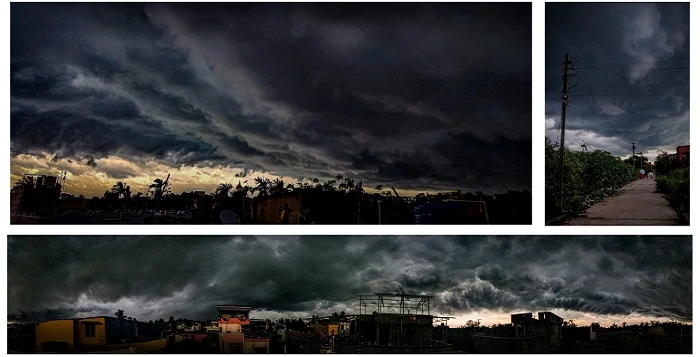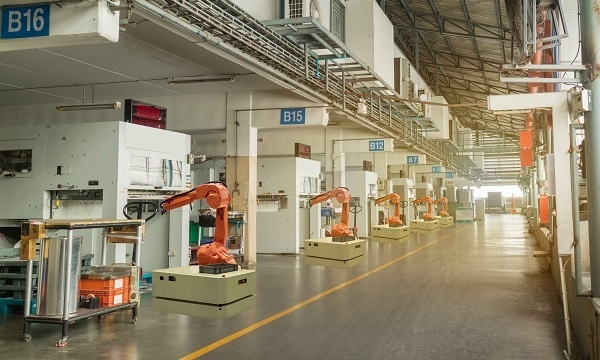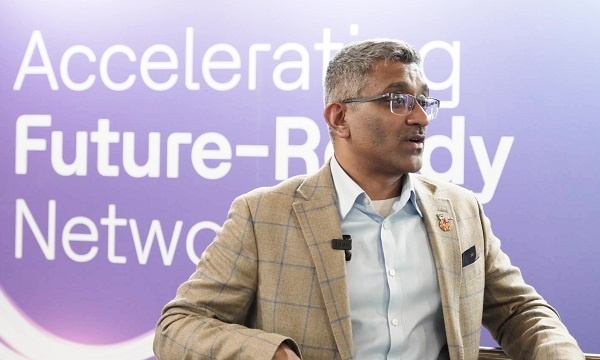Remember Dorothy from the 1996 Hollywood movie Twister? It was a groundbreaking data-gathering device built to tackle dangerous tornadoes that wreaked havoc in the US
Tornadoes are not restricted to the US and their occurrence in the Indian subcontinent is not uncommon. In May 2021, a dangerous funnel cloud appeared over the Ganges in West Bengal.
In 2021, super-cyclones Yaas, Tauktae and Gulab made headlines for leaving 2.5 million people displaced. The Internal Displacement Monitoring Centre (IDMC) in a report later mentioned that around 80 disaster incidents left over 4.9 million people homeless in India.
A Reliefweb report mentioned Asia has seen the highest frequency of natural disasters in 2021. In addition, the total frequency of global natural disasters was 13% higher than the average of the last 30 years (1991-2020).
The UN’s Global Assessment Report (GAR2022) stated that disaster events are projected to reach 560 a year by 2030, exposing half of the world’s population to floods, storms and tsunamis.
How technology is helping people today
Big data analytics: Analytics is the aggregation and examination of data, including personal and medical data and the geolocation of roads, from many sources to derive insights and track survivors during disasters.
The pandemic analytics of HCLTech helped craft the right response with statistics, control theory, simulation modeling and Natural Language Processing (NLP). Besides enhancing situational awareness, it has developed creative and pragmatic insights for more informed decisioning and shown the previously invisible (like unprecedented sharing of visualizations and messages to educate the public) with predictive analytics.
Cloud and AI: In a time of crisis, cloud gives the ability to provide on-demand access to computing resources and storage. Coupled with AI—that automates and optimizes tasks—scientists can process and interpret a large amount of data, predict weather, its impact on population and to some extent earthquakes.
Experts at Cornell University used AI’s brain machine learning (ML) to better forecast “slow-slip earthquakes”—a type of tectonic motion of much lower intensity that can last for hours or days.
In 2021, Google’s flood forecasting initiative had sent out 115 million flood alerts to 23 million people. In November last year, Google expanded the flood forecasts to 18 more countries.
HCLTech Data & AI on Cloud combines services to modernize enterprise data and analytic environments, including data sciences, and data and analytics platforms. Leveraging AI and cloud expertise, HCLTech provides the structure, processes and best practices to transform data into valuable information that helps mitigate risk and strengthens decision-making.
5G network: 5G is the latest in cellular technology designed to provide faster and more reliable internet connectivity. Its high speed and low latency improve the efficiency and productivity of a connected device, especially during an emergency.
Swedish giant Ericsson is working with a Chinese company to use 5G in disaster management, including accurate disaster prediction, visible disaster occurrence, shared data silos, coordinated emergency command and timely evacuation.
HCLTech Connected Cloud enables organizations to optimize leading network technologies like 5G and edge, combining the services required to effectively manage ever-growing quantities of data. Last year, HCLTech collaborated with Intel Corporation and Mavenir to develop and provide scalable private 5G network solutions for communication service providers.
Drones: One of the most impactful technologies during disasters, like an earthquake, an uncontrollable forest-fire or flood, these unmanned aerial vehicles give a 360° view footage from the site of the disaster and provide medical aid and logistics to victims before rescuers reach them.
HCLTech AIOps—that allows predictive analytics and other functional data—and DRYiCE™, when combined with drones can provide real-time video feeds with geo-information layers, including maps, building layouts and points of user-generated markers that can empower first responders to understand any emergency operational scene with collaborative visual intelligence. Last year, DRYiCE™ launched IntelliOps—a solution addressing the full-stack AIOps and observability needs of an enterprise.
Cloud Evolution: Make innovation a habit
Digital twin: A digital twin is a virtual representation that serves as a real time replica of a physical object or process. It contains a physical item in real space, a digital twin in a software form and data that links the first and second elements together.
While transport departments of Los Angeles and Yorkshire have used it for easy movement of traffic, Shanghai and Singapore have their own digital twins that helps authorities to plan and react to COVID-19 and also simulate the effects of natural disasters.
HCLTech has created digital twins of wind turbines and ported them to the metaverse, eliminating the need for physical maintenance of the turbines on the wind farm. When combined with new technologies of the metaverse, this provides added benefits to enterprises, especially during an emergency.
Internet of Things (IoT): Besides its varied use across industries, disaster management is one of the key use cases for IoT. The availability of real-time information along with real-time analytics helps in planning for prevention and response to disasters.
With access to sensors, high-speed connectivity, cloud computing platforms, ML and analytics and conversational AI, IoT offers disruptive potential in the prevention, preparation, response and recovery phases of disaster management.
Developed by IoTWoRKS™, HCLTech’s Smart Consignment Inventory Management (SCIM) solution enables hospitals and equipment manufacturers to track and manage medical devices, surgical kits and consumables through a consolidated view of the consignment inventory value chain.
Remote sensors: Remote sensors provide real-time data that is useful—mainly in unmanned areas that includes the walls of a huge dam—to send out alerts before and during catastrophes, like floods, earthquakes and forest-fires.
Recently, the Indian Space Research Organisation (ISRO) said it will offer a five-day online course based on Remote Sensing and Geographic Information System (GIS) beginning on February 28. Besides getting an understanding of the scientific concepts and an overview of atmospheric and oceanic hazards, the participants will gain the ability to access, analyze and apply satellite remote sensing data for atmospheric and oceanic disasters.
LEO satellites: Billions of dollars are now being invested in new-gen Low Earth Orbit (LEO) satellites. These satellites orbit at a low altitude and better connect remote and inaccessible regions.
Uncovered and vulnerable to communications disruptions caused by natural disasters, these satellites provide the terrestrial infrastructure giving internet access to almost 2.4 billion people in dark areas. Low-orbit satellites, like Starlink and OneWeb, will be able to bring connectivity to areas that have been previously unable to access the internet.
Sound waves: A revolution in firefighting—without the use of water or chemicals—was introduced by undergraduate engineering students Seth Robertson and Viet Tran at George Mason University in the US in 2015.
The founders of Force SV said the acoustic fire suppression technology they use to douse multiple types of fires, also protect people and equipment from harmful chemicals and can be applied to automated systems, ensuring safety of nearby personnel.
DevOps: During the 2018 unexpected flood in India, the Kerala State IT Mission developed and deployed a crisis management system within 12 hours. Technology resources from across the globe volunteered to code, review and recode to enhance the functionality of the platform using DevOps.
HCLTech DevOps engineering services, with a robust ecosystem of partners, including tool developers and platform providers, help customers address their business needs with future-proof IT solutions and ensure they realize the full potential of the DevOps methodology, enabling them with the right expertise, consulting mindset, in-house developed platforms, tools and a framework for success.





